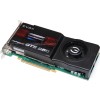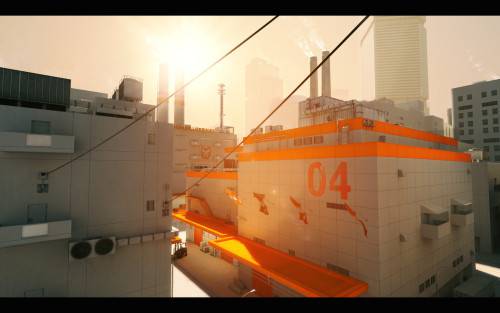- Qualcomm Launches Snapdragon 4 Gen 2 Mobile Platform
- AMD Launches Ryzen PRO 7000 Series Mobile & Desktop Platform
- Intel Launches Sleek Single-Slot Arc Pro A60 Workstation Graphics Card
- NVIDIA Announces Latest Ada Lovelace Additions: GeForce RTX 4060 Ti & RTX 4060
- Maxon Redshift With AMD Radeon GPU Rendering Support Now Available
EVGA GeForce GTS 250 Superclocked

The first mid-range offering of NVIDIA’s GeForce 200 series is here, in the form of the GTS 250. As a follow-up to the company’s 9800 GTX+, we already have a good idea of what to expect. But, various improvements aim to make things interesting, such as a redesigned PCB, smaller form-factor, single PCI-E connector, improved temperatures and refreshed pricing.
Page 7 – Mirror’s Edge
What was the last first-person game on the PC to truly blow you away, or offer some unique gameplay experience? New first-person shooters come out quite often, and while some show off some new features and gameplay twists, few of them truly regenerate the genre like we’d hope. Mirror’s Edge is a title that strived to do just that, and for the most part, I’d have to say they’ve done a great job.
First and foremost, Mirror’s Edge isn’t so much a first-person shooter as it is a first-person adventure game, because for the most part, combat isn’t the main focus. Throughout some of the few levels I played through, at times there could be a full ten-minute span without even seeing a single person, which is actually somewhat refreshing. The game focuses on figuring out the best way to get from point A to point B, heavily utilizing the parkour style of travel.
Most levels in Mirror’s Edge offers a similar level of system-intensity, so I based our choice on one that was fun to play through, and one that allowed an easily-replicable run-through. It takes place in chapter six, “Pirandello Kruger”, and Checkpoint A. We begin in a large building, behind a window, looking out at the city. Our run-through takes us outside of this building, down to the street and up to the top of the building shown to the right in the above screenshot.



The GTS 250 continued to perform well here, with respectable performance at all resolutions. The 512MB limitation of the 9800 GTX+ became clear here once again, with a loss of 7FPS at 2560×1600, when compared to the GTS 250.
Mirror’s Edge – PhysX Testing
If there’s one title that’s been burned in editor’s brains over the course of the past few months, it’s this one. NVIDIA has been quite proactive in making sure we know how great the game is, and with its heavy use of PhysX, it’s not hard to understand why they believe that. Luckily though, as I mentioned above, the game is actually quite fun, and unique, so I think it deserves to be pushed a little bit.
Since Mirror’s Edge is really the first commercial game to feature PhysX use throughout, I thought it’d be appropriate to test each card with the technology enabled, since it’s generally going to be something that people would want. Bear in mind, though, that ATI cards are automatic losers, simply because they are unable to accelerate PhysX on the GPU like NVIDIA’s cards can. For that reason, their cards are going to be unable to handle PhysX computation reliably at any resolution, regardless of the CPU. Using the old-school PhysX dedicated card would rid this problem, however.



I was quite surprised here. Despite having already pushed the GTS 250 to what I thought was its furthest limit with Mirror’s Edge at 2560×1600, enabling PhysX still kept the game playable. Gameplay wasn’t as ideal with it enabled, despite only having a few frames dropped off (it felt like more), but the performance I did see was acceptable.
|
Graphics Card
|
Best Playable
|
Avg. FPS
|
|
NVIDIA GTX 295 1792MB x 2
|
2560×1600 – Max Detail, 8xAA
|
118.680 FPS
|
|
NVIDIA GTX 285 1GB x 2
|
2560×1600 – Max Detail, 8xAA
|
88.346 FPS
|
|
Zotac GTX 295 1792MB
|
2560×1600 – Max Detail, 8xAA
|
70.562 FPS
|
|
EVGA GTX 285 1GB SSC Edition
|
2560×1600 – Max Detail, 8xAA
|
52.316 FPS
|
|
Zotac GTX 285 1GB AMP!
|
2560×1600 – Max Detail, 8xAA
|
51.733 FPS
|
|
NVIDIA GTX 285 1GB
|
2560×1600 – Max Detail, 8xAA
|
48.385 FPS
|
|
Palit GTX 280 1GB
|
2560×1600 – Max Detail, 8xAA
|
44.806 FPS
|
|
Diamond HD 4870 1GB
|
2560×1600 – Max Detail, 8xAA
|
41.452 FPS
|
|
XFX GTX 260/216 896MB
|
2560×1600 – Max Detail, 8xAA
|
38.122 FPS
|
|
Palit HD 4870 X2 2GB
|
2560×1600 – Max Detail, 8xAA
|
35.297 FPS
|
|
EVGA GeForce GTS 250 1GB SC
|
2560×1600 – Max Detail, 4xAA
|
36.956 FPS
|
|
NVIDIA GeForce GTS 250 1GB
|
2560×1600 – Max Detail, 4xAA
|
35.756 FPS
|
|
Sapphire HD 4830 512MB
|
2560×1600 – Max Detail, 4xAA
|
32.589 FPS
|
|
ASUS GeForce 9800 GTX+ 512MB
|
2560×1600 – Max Detail, 0xAA
|
46.250 FPS
|
|
Sapphire HD 4670 512MB
|
1920×1200 – Max Detail, 0xAA
|
39.204 FPS
|
Ultimately, the GTS 250’s best playable settings mimic the above graph with 4xAA enabled and PhysX disabled. The 9800 GTX had to drop anti-aliasing, at which point it became much more playable.
Support our efforts! With ad revenue at an all-time low for written websites, we're relying more than ever on reader support to help us continue putting so much effort into this type of content. You can support us by becoming a Patron, or by using our Amazon shopping affiliate links listed through our articles. Thanks for your support!






